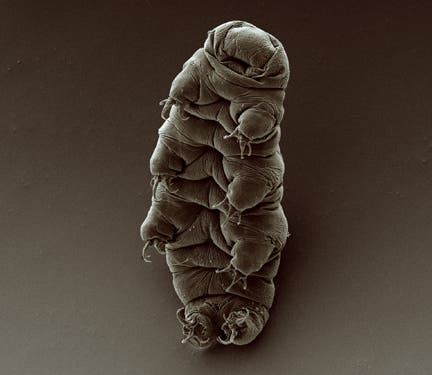Also known as the water bear, the tardigrade has a lot to be proud of — this tiny organism is nigh-indestructible, known to have survived in extreme temperatures ( -272C to +151C / -457.6F to 303.8F) and to be the only animal that can brave the vacuum of space unprotected and live to tell the tale. A team from the University of North Carolina at Chapel Hill, curious as to how the tardigrade can accomplish such incredible feats, sequenced the genome of the microorganism. Their paper, published in the journal PNAS, reveals that a huge chunk of its DNA is of foreign origin — nearly 17.5% of the water bear’s genome (some 6000 genes) are primarily of bacterial origin, though genes from fungi and plants have also been identified.
Defined as the shifting of genetic material materially between organisms, horizontal gene transfer is widespread in the microscopic world. The process occurs in humans too but in a limited fashion, and via transposons and viruses. Microscopic animals however are known to have large complements of foreign genes.
Until today, the rotifer held the title for ” the greatest complement of foreign DNA of any microscopic organism,” but the newly-sequenced tardigrade genome includes twice as many genes as those boasted by the rotifer. And the authors have a theory as to why this extremely extensive gene transfer may have occurred.
Tardigrades have long been known to undergo and survive the process of desiccation (extreme drying out). The authors believe that this process is extremely harsh on the tardigrade’s genome, with strands of DNA suffering significant sheering and breakage, causing a general loss of integrity and leakiness of the water bear’s nucleus. This may allow foreign genetic material to easily exploit such gaps in the genome and integrate themselves, similar to the gene-transfer procedure known as electroportation.
For now, the tardigrade has a dual claim to fame, being the only known animal to survive the vacuum of space, and being the animal with the largest genetic complement.
Not bad for a 1.5mm long bug.










